Lithuania
Welcome to Lithuania
Lithuania, the southernmost of the Baltic states, is a country where medieval history, vibrant cities, and wild natural beauty come together to create a truly unique travel experience. Whether you’re drawn by the charm of cobblestone streets, the call of dense forests, or the allure of the Baltic Sea, Lithuania in 2025 is ready to surprise and delight every kind of traveler.
Lithuania is a land of contrasts and harmony. Its capital, Vilnius, is famed for its UNESCO-listed Old Town, a labyrinth of baroque churches, pastel-hued facades, and hidden courtyards. Beyond the urban centers, the countryside unfolds in a patchwork of lakes, forests, and sand dunes, punctuated by ancient castles and tranquil villages. Lithuania’s Baltic coastline, including the striking Curonian Spit, offers windswept beaches and rare wildlife, while its national parks are havens for hikers, cyclists, and nature lovers.
Since gaining independence from the Soviet Union in 1991, Lithuania has rapidly modernized, joining the European Union in 2004. Today, it stands as a welcoming, innovative nation with a strong sense of identity and a deep respect for its traditions. The Lithuanian people are renowned for their warmth and hospitality, eager to share their culture, cuisine, and stories with visitors.
Why Visit Lithuania?
1.
A Tapestry of History and Nature: Lithuania is a destination where centuries-old castles rise above serene lakes, and ancient forests are never far from lively, modern cities. The country’s compact size makes it easy to explore both its urban and rural charms in a single trip.
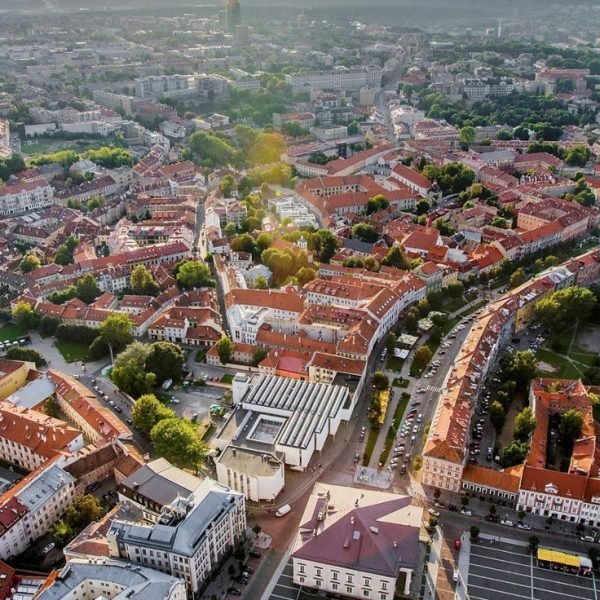
2.
Authentic Experiences and Warm Hospitality: From bustling city festivals to quiet village traditions, Lithuania offers immersive cultural encounters. Its locals are known for their friendliness, making every traveler feel at home.
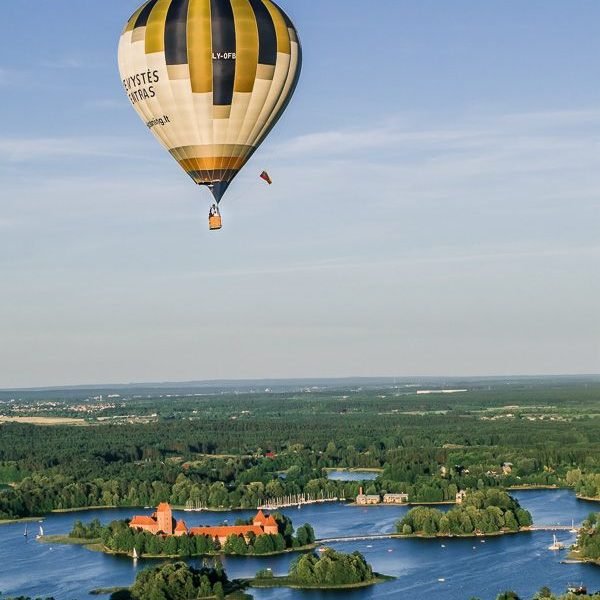
Planning Your Trip
Visa Information
Schengen Zone Entry
Lithuania is a proud member of the Schengen Area, which means entry requirements are harmonized with most other European countries. The visa and entry process depends on your nationality and the purpose of your visit.
Visa-Free Travel
- Citizens of European Union (EU) and Schengen countries can enter Lithuania freely for tourism, business, or family visits without a visa, and can stay indefinitely.
- Many non-EU countries, including the United States, Canada, Australia, Japan, and the UK, enjoy visa-free access for up to 90 days within any 180-day period for tourism, business, or short-term studies. This 90-day limit applies to the entire Schengen Area, not just Lithuania. Overstaying can result in fines or a ban from the Schengen zone.
Schengen Visa for Non-Visa-Exempt Travelers
- If your country is not on the visa-exempt list, you must apply for a Schengen short-stay visa (Type C). This visa allows you to stay in Lithuania and other Schengen countries for up to 90 days within a 180-day period.
- The application requires a valid passport (issued within the last 10 years and valid for at least 3 months beyond your planned departure), a completed application form, recent passport photos, proof of travel insurance, accommodation bookings, proof of sufficient funds, and sometimes a letter of invitation or proof of purpose for your trip.
- Processing times can vary, so apply well in advance of your travel dates.
ETIAS Authorization
- Starting in 2025, travelers from visa-exempt countries will need to obtain an ETIAS (European Travel Information and Authorization System) authorization before entering Lithuania and other Schengen countries. This is an online pre-screening process and is not a visa, but it is mandatory for entry.
Long-Stay and Work Visas
- If you plan to stay longer than 90 days, for work, study, or family reasons, you must apply for a national (D) visa or a residence permit. Lithuania has updated its immigration policies for 2025, including reduced work quotas for non-EU nationals and stricter employer regulations. Highly qualified professionals may be able to secure permits outside the quota system.
- Applicants for work or study visas should prepare additional documentation, such as employment contracts, letters of acceptance, and proof of qualifications.
At the Border
- Upon arrival, you may be asked to show proof of accommodation, travel insurance, a return or onward ticket, and evidence of sufficient funds for your stay.
Best Time to Visit
Lithuania experiences four distinct seasons, each offering a unique atmosphere and set of activities.
Spring (April to June):
- Spring is a delightful time to visit, with blooming wildflowers, mild temperatures, and fewer tourists. It’s ideal for exploring cities and national parks as nature awakens.
Summer (June to August):
- Summer is the peak travel season. Days are long, warm, and sunny, with temperatures ranging from 18°C to 25°C (64°F to 77°F). This is the best time for festivals, outdoor dining, and enjoying the Baltic Sea coast or the Curonian Spit. Major events and lively street life make cities like Vilnius and Kaunas especially vibrant.
Autumn (September to November):
- Autumn brings a tapestry of golden foliage, crisp air, and harvest festivals. It’s a quieter and more affordable time to visit, perfect for hiking, photography, and sampling seasonal cuisine.
Winter (December to March):
- Winters are cold, with temperatures often below freezing, but the country transforms into a snowy wonderland. Christmas markets, ice skating, and winter sports in the countryside make this a magical time, especially in Vilnius’ Old Town.
Travel Tip: If you want to avoid crowds but still enjoy pleasant weather, late spring and early autumn are the sweet spots for a Lithuanian holiday.
Getting To and Around
Getting to Lithuania
By Air
- Lithuania’s main international gateway is Vilnius International Airport (VNO), located just 6 kilometers from the city center. Kaunas International Airport (KUN) and Palanga International Airport (PLQ) also serve international flights, especially from European hubs.
- Direct flights connect Lithuania with major European cities, including London, Frankfurt, Paris, Warsaw, and Amsterdam. Budget airlines such as Ryanair and Wizz Air offer frequent, affordable connections.
By Train
- Lithuania is connected by rail to neighboring countries, with direct trains from Poland, Latvia, and Belarus. The most popular route is the Vilnius-Warsaw train, which is convenient for travelers exploring the Baltics and Central Europe.
By Bus
- International bus services are extensive and affordable, linking Lithuania with Poland, Latvia, Estonia, Germany, and beyond. Major operators include Lux Express and Ecolines, offering comfortable journeys with Wi-Fi and onboard amenities.
By Car
- Lithuania is easily accessible by car from neighboring countries. The road network is modern and well-maintained, and border crossings are smooth for EU and Schengen travelers. Rental cars are widely available at airports and in major cities.
By Sea
- Ferry services connect Klaipėda, Lithuania’s main port city, with Germany (Kiel) and Sweden (Karlshamn). This is a scenic and relaxing way to arrive, especially if you plan to explore the Baltic coast.
Getting Around Lithuania
Public Transport
- Lithuania boasts an efficient, affordable public transport system. In cities like Vilnius, Kaunas, and Klaipėda, buses and trolleybuses are the main modes of transport, with regular schedules and easy-to-use ticketing systems.
- Intercity buses are reliable and connect all major towns and tourist destinations. They are the best option for reaching rural areas and smaller cities.
Trains
- Lithuanian Railways operates a network of trains connecting Vilnius, Kaunas, Klaipėda, Šiauliai, and other cities. Trains are comfortable and punctual, making them a great choice for longer journeys within the country.
Taxis and Ride-Sharing
- Taxis are widely available in urban areas. Ride-sharing apps like Bolt and Uber operate in Vilnius and Kaunas, offering convenient and cashless travel.
Car Rental
- Renting a car is a fantastic way to explore Lithuania’s countryside, national parks, and coastal regions at your own pace. Roads are in good condition, and driving is straightforward for visitors familiar with European traffic rules.
Cycling
- Lithuania is increasingly bike-friendly, with dedicated cycling paths in cities and scenic routes in the countryside, especially along the Curonian Spit and around Trakai.
Domestic Flights
- Due to the country’s compact size, domestic flights are rare and generally unnecessary. Most destinations can be reached within a few hours by road or rail.
Final Tips
- Always check the latest entry and visa requirements before you travel, as rules may change.
- Consider purchasing travel insurance that covers health, accidents, and theft.
- Lithuania uses the euro, and credit cards are widely accepted, though it’s useful to have some cash for small purchases in rural areas.
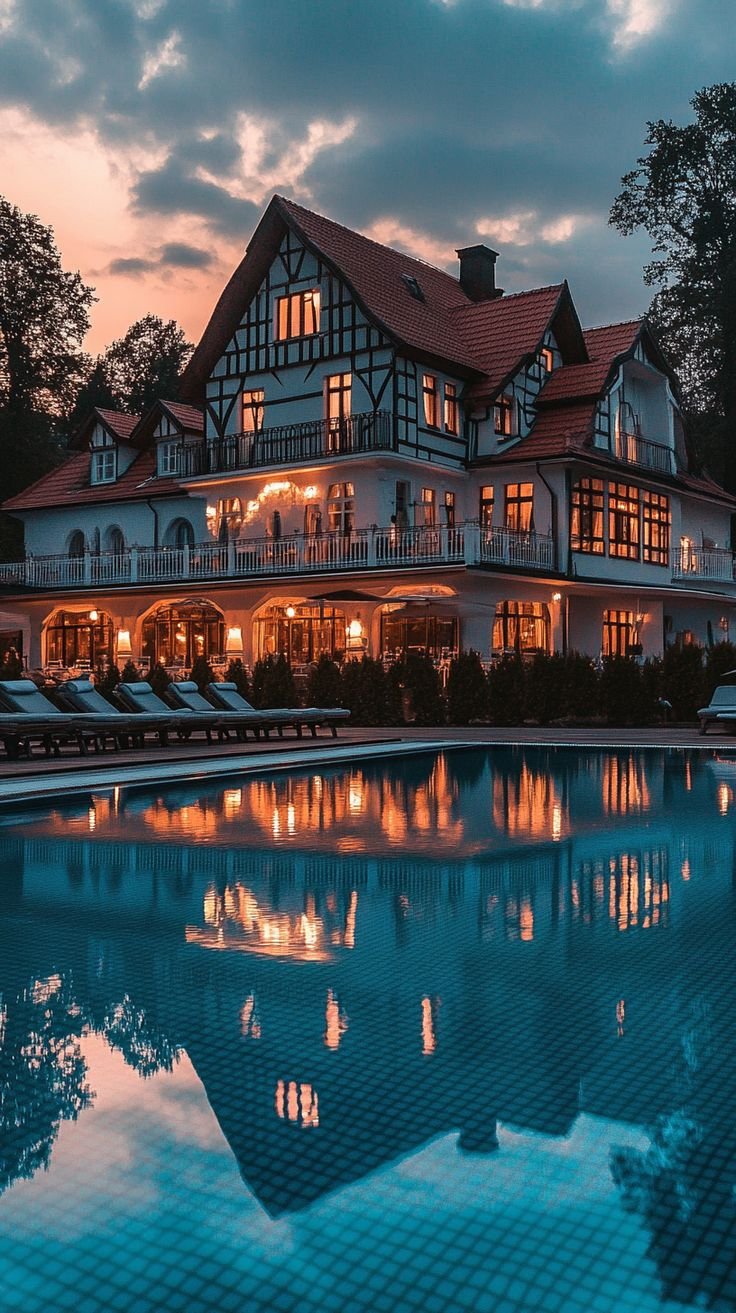
Accommodation
Lithuania’s accommodation landscape blends historic charm, modern comfort, and budget-friendly options, catering to every traveler’s needs. From boutique hotels in Vilnius’ UNESCO-listed Old Town to seaside guesthouses in Palanga, here’s how to find your perfect stay.
Historic Boutique Hotels
For travelers seeking character, Lithuania’s cities shine with converted monasteries, palaces, and heritage buildings.
- Domus Maria Hotel (Vilnius): Housed in a 17th-century monastery, this affordable gem offers tranquil courtyards and rooms with exposed brick walls. Guests praise its hearty breakfasts and proximity to Old Town landmarks like St. Anne’s Church.
- St. Palace Hotel: A 4-star boutique property in a restored historical building, featuring individually designed rooms with antique details. Ideal for business travelers, it includes private parking and a terrace restaurant.
- Radisson Collection Astorija Hotel: A 5-star jewel in Vilnius’ Old Town, blending Art Nouveau architecture with luxury amenities like a French brasserie and renovated conference spaces.
Modern Comfort
City centers and business districts offer sleek, tech-savvy stays.
- Radisson Blu Hotel Lietuva (Vilnius): Its Skybar on the 22nd floor provides panoramic views, while rooms include blackout curtains and ergonomic workspaces. The wellness center with saunas and a gym is free for guests.
- Hilton Garden Inn Vilnius City Centre: Opened in 2019, this modern hotel on Gedimino Avenue features a 24-hour shop, fitness center, and conference halls with modular setups.
- City Gate Hotel: Positioned near the Dawn Gate, this 3-star hotel offers air-conditioned rooms and secure parking, perfect for exploring on foot.
Budget-Friendly Options
Affordable stays without sacrificing comfort are plentiful.
- Panorama Hotel (Vilnius): With rates from €60/night, its “Sky Rooms” on the top floor include city views and mini-fridges. A short walk from the train station.
- Comfort Hotel – Rock’n’Roll Vilnius: A quirky 3-star hotel with music-themed decor, ideal for younger travelers. Prices start around €70/night.
- Florens BB Hotel (Old Town): Long-stay options from €450/month include shared kitchens and weekly linen changes, popular with students and digital nomads.
Unique Stays
- Trakai Island Castle: While there’s no lodging inside the castle itself, nearby guesthouses like Trakai Guesthouse offer lakeside views and traditional Lithuanian hospitality.
- Curonian Spit: Opt for family-run guesthouses in Nida or Juodkrantė, where pine-scented air and dune hikes start at your doorstep.
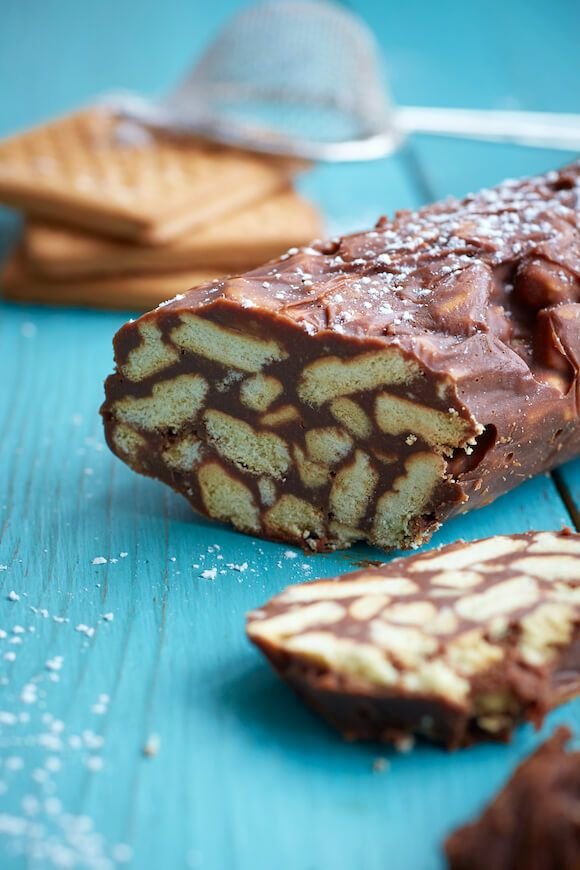
Food and Drink
Lithuanian cuisine is a hearty fusion of farm-fresh ingredients, medieval traditions, and modern flair. Here’s what to savor in 2025.
Must-Try Dishes
- Cepelinai: Potato dumplings stuffed with minced meat or curd, named for their zeppelin shape. Best paired with sour cream and crispy bacon bits.
- Šaltibarščiai: A vibrant cold beetroot soup with kefir, cucumbers, and dill, served with boiled potatoes-a summer staple.
- Kibinai: Flaky pastries filled with spiced lamb or pork, a legacy of the Karaim community in Trakai.
- Balandėliai: Cabbage rolls stuffed with minced meat and rice, slow-cooked in tomato sauce.
- Vėdarai: Crispy pork intestines stuffed with potatoes, a rustic favorite at countryside taverns.
Local Beverages
- Midus: Traditional honey mead, often infused with berries or herbs. Try the aged varieties at Medžiotojų Užeiga in Vilnius.
- Craft Beer: Lithuania’s microbrewery scene thrives. Sample Genys Taproom’s IPAs in Vilnius or Kauno Alus in Kaunas.
- Šakotis: Not a drink, but the iconic “tree cake” baked on a rotating spit. Pair with coffee or dessert wine.
Where to Eat
- Old Town Vilnius:
- Etno Dvaras: A folksy chain serving cepelinai and smoked meats in a rustic setting.
- Sweet Root: A Michelin Guide-listed spot offering seasonal tasting menus with foraged ingredients.
- Kaunas:
- Bernelių Užeiga: Hearty portions of potato pancakes and local beers.
- Moxy: A bistro with modern twists on classics, like venison with juniper sauce.
- Coastal Flavors:
- Nidos Smilgė (Nida): Smoked fish platters and curonian-style herring.
- Žuvinė (Klaipėda): A fishmonger-turned-restaurant with amberjack ceviche and dill-infused butter.
Food Markets & Festivals
- Halės Market (Vilnius): A 1906 market hall selling farm cheeses, smoked eel, and rye bread.
- Kaziukas Fair (March): Vilnius’ largest folk festival, where artisans sell honey cakes and wooden crafts.
- Vilnius Food Festival (September): A gourmet event featuring Baltic chefs and live cooking demos.
Dietary Tips
- Vegetarian/Vegan: Many restaurants now offer plant-based versions of traditional dishes, like beetroot cepelinai.
- Gluten-Free: Buckwheat pancakes and potato-based dishes are naturally gluten-free; inquire about dedicated fryers.
Final Bite: A Culinary Journey
Lithuania’s food scene tells a story of resilience and creativity. From smoky farmhouse kitchens to avant-garde tasting menus, every meal here connects you to the land and its people. Whether you’re sipping midus in a candlelit cellar or grabbing a kibinas from a street vendor, prepare for flavors that linger long after your trip ends.
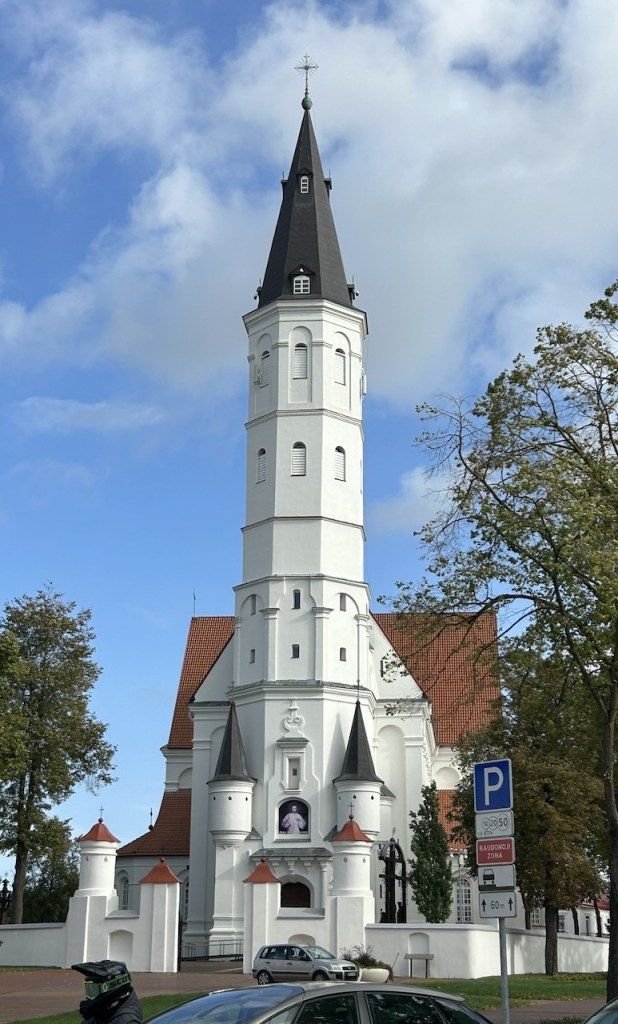
Must-See Attractions
Vilnius Old Town
The heart of Lithuania’s capital is a UNESCO World Heritage Site, renowned for its cobblestone lanes, baroque churches, and pastel-hued buildings. Stroll through the bustling Pilies Street, visit the imposing Vilnius Cathedral and Bell Tower, and climb Gediminas’ Tower for panoramic views of the city. Don’t miss the quirky Užupis district, a self-declared “republic” of artists, with its bohemian spirit and street art.
Trakai Island Castle
Set on an island in Lake Galvė, Trakai Castle is a fairy-tale fortress dating back to the 14th century. Accessible by wooden bridges, the red-brick castle houses a museum showcasing Lithuania’s medieval past. The surrounding lakes and forests make Trakai a perfect day trip from Vilnius.
Curonian Spit National Park
A UNESCO-listed natural wonder, the Curonian Spit is a slender sand dune peninsula stretching along the Baltic Sea. Home to Europe’s tallest migrating dunes, pine forests, and picturesque fishing villages like Nida, it’s a paradise for nature lovers and beachgoers. Explore the Dead Dunes, spot rare birds, and relax on pristine beaches.
Hill of Crosses
Near Šiauliai, this haunting pilgrimage site features thousands of crosses of all sizes, a symbol of Lithuanian faith and resilience. The Hill of Crosses is both spiritual and visually striking, drawing visitors from around the world.
Kaunas Old Town and Castle
Lithuania’s second city, Kaunas, boasts a charming old town with Gothic, Renaissance, and Baroque architecture. Highlights include the 14th-century Kaunas Castle, the lively Town Hall Square, and the pedestrian Laisvės Alėja, lined with cafes and shops. In 2025, the city’s cultural scene is especially vibrant, with festivals and art events throughout the year.
Kernavė Archaeological Site
Known as the “Troy of Lithuania,” Kernavė is an ancient capital with impressive hill forts and archaeological remains. The site’s modern visitor center features interactive exhibits and virtual reality experiences, making history come alive for all ages.
Druskininkai Spa Town
Famous for its mineral springs and wellness centers, Druskininkai is Lithuania’s premier spa destination. In 2025, the town celebrates the legacy of artist M.K. Čiurlionis with special exhibitions and cultural events, making it a must-visit for art lovers and those seeking relaxation.
Aukštaitija National Park
A haven for outdoor enthusiasts, this national park in northeastern Lithuania is dotted with crystal-clear lakes, dense forests, and traditional wooden villages. It’s the perfect place for hiking, cycling, kayaking, and wildlife watching.
Klaipėda and the Baltic Coast
Lithuania’s main port city, Klaipėda, blends maritime history with modern culture. Explore the old town’s German-style architecture, visit the Lithuanian Sea Museum, and use the city as a gateway to the Curonian Spit. The nearby seaside resort of Palanga is famous for its sandy beaches and lively promenade.
Unique Manors and Museums
Lithuania’s countryside is dotted with restored manors like Kaimelis Manor and Raudondvaris Manor, offering a glimpse into the nation’s aristocratic past. In 2025, new exhibitions at the Stasys Eidrigevičius Museum in Panevėžys and the Museum of Feelings in Anykščiai add fresh cultural experiences.
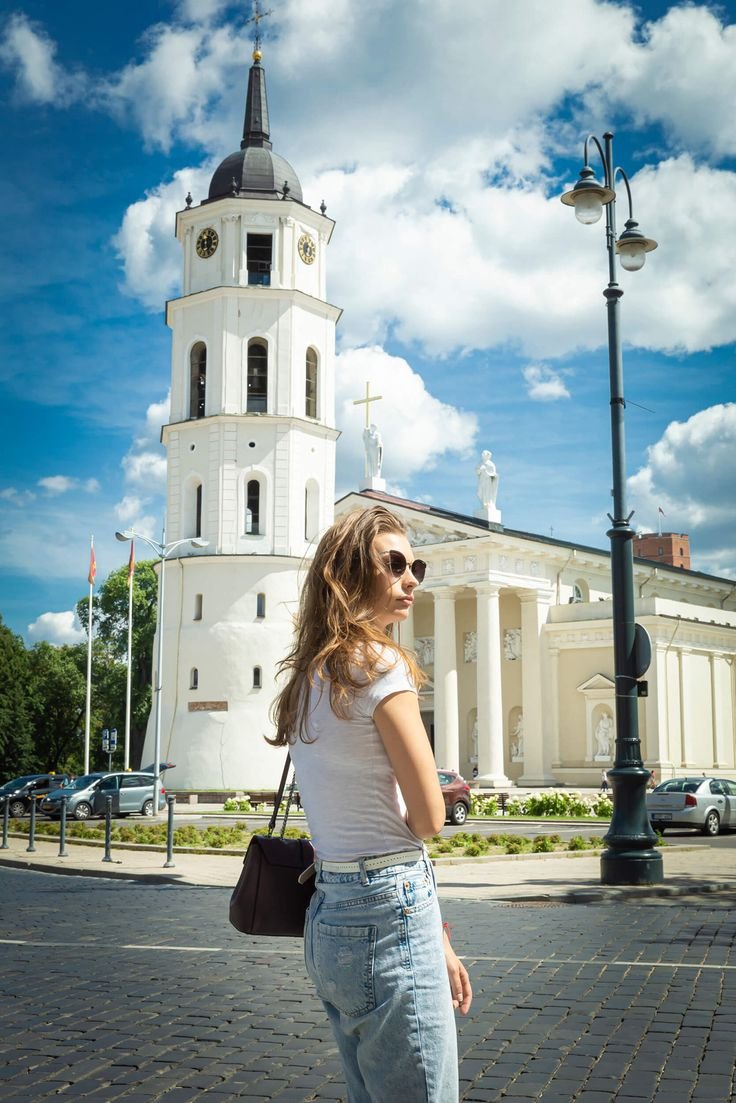
Must-Do Activities
Beyond sightseeing, Lithuania invites travelers to immerse themselves in its vibrant traditions, natural beauty, and creative spirit. Here are the essential experiences that will make your 2025 visit unforgettable:
Explore Vilnius on Foot or by Bike
Join a guided walking or cycling tour to uncover the secrets of Vilnius Old Town, from hidden courtyards to the artistic corners of Užupis. The city’s green spaces, including Bernardine Gardens and Vingis Park, offer peaceful retreats within the urban buzz.
Sail or Kayak on Lithuania’s Lakes
With thousands of lakes, Lithuania is a paradise for water activities. Rent a kayak or canoe in Aukštaitija National Park or Trakai, and glide through tranquil waters surrounded by lush forests and historic landmarks.
Experience the Curonian Spit’s Natural Wonders
Hike the towering dunes of the Curonian Spit, cycle along scenic trails, or try windsurfing on the lagoon. Birdwatchers will delight in the region’s biodiversity, especially during spring and autumn migrations.
Attend Festivals and Cultural Events
2025 is a year of celebration in Lithuania, with major festivals in Vilnius, Kaunas, and Druskininkai. Don’t miss the International Kaunas Jazz Festival, the Čiurlionis-themed events in Druskininkai, and the summer music festivals at Pažaislis Monastery. Local fairs, like the Kaziukas Fair in Vilnius, offer folk crafts, music, and traditional foods.
Relax in a Traditional Lithuanian Spa
Indulge in mineral baths, mud treatments, and saunas in Druskininkai or Birštonas. Lithuania’s spa culture is rooted in centuries-old traditions and modern wellness innovations.
Discover Culinary Experiences
Take a food tour in Vilnius or Kaunas to sample cepelinai (potato dumplings), kibinai (savory pastries), and local craft beers. In 2025, look for pop-up “forest kitchens” and gastronomic events in Merkinė, celebrating the flavors of the Dzūkija region.
Visit Artistic and Historical Museums
Immerse yourself in Lithuania’s creative side at the MO Museum of Modern Art in Vilnius, the M.K. Čiurlionis National Art Museum in Kaunas, or the Maritime Museum in Klaipėda. New interactive exhibits and virtual reality experiences are being launched in 2025.
Cycle the Countryside and Coast
Lithuania’s flat terrain and well-marked cycling routes make it ideal for exploring by bike. Popular routes include the Nemunas River Valley, the Panemunė castles road, and the coastal trails of the Curonian Spit2.
Climb the Hill of Crosses at Sunrise
For a truly spiritual experience, visit the Hill of Crosses at dawn, when the site is quiet and bathed in golden light. Leave your own cross or simply reflect on the site’s powerful history.
Explore Castles and Manors
From the fairy-tale Trakai Castle to the newly restored Sapieha Palace in Vilnius, Lithuania’s castles and manors are windows into the nation’s past. Many offer guided tours, concerts, and seasonal events.
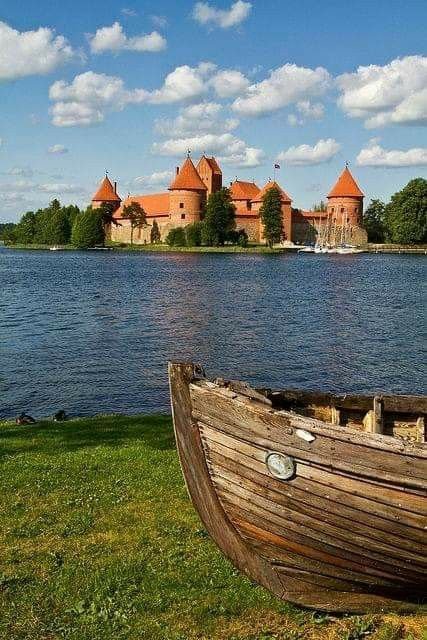
Travel Tips
Lithuania, with its welcoming spirit, medieval towns, and pristine landscapes, is a fantastic destination for travelers in 2025. To make your journey smooth and memorable, understanding local safety, customs, and language essentials is key. Here’s a comprehensive guide to help you travel smart, respectfully, and confidently.
Safety Advice
General Safety
Lithuania is considered a safe country for travelers, with low rates of violent crime and civil unrest. Most visits are trouble-free, and the atmosphere is relaxed in cities and rural areas alike. However, like any destination, it’s wise to exercise common sense and stay alert, especially in unfamiliar settings.
Petty Crime and Pickpocketing
The most common risks for tourists are pickpocketing and bag snatching, particularly in crowded places such as markets, public transport, bus and train stations, and nightlife districts. Always keep your valuables secure, avoid carrying large amounts of cash, and use anti-theft bags or money belts. Don’t leave your belongings unattended in restaurants or bars, and be extra vigilant during festivals or large gatherings.
Scams
Tourist scams are not uncommon. Taxi scams are particularly notorious, with some drivers overcharging or refusing to use the meter. To avoid issues, only use licensed taxis or reputable ride-sharing apps like Bolt or Uber, and always check that the meter is running. Be cautious with street vendors and check your change carefully. Decline unsolicited offers of help, especially if they involve money or valuables.
Transport Safety
Public transport in Lithuania is generally safe and reliable. However, petty theft can occur, especially on crowded buses and trains. At night, consider using trusted ride-sharing services rather than walking alone in less populated areas. If you rent a car, ensure it’s properly insured and familiarize yourself with local traffic laws. Roads are well maintained, but driving can be aggressive, and rural roads may be less predictable.
Nightlife and Alcohol
Lithuania has a lively nightlife, especially in Vilnius and Kaunas. While most venues are safe, be cautious in and around bars and clubs, particularly late at night. Drink spiking, though rare, can happen-never leave your drink unattended and avoid accepting drinks from strangers. Alcohol-related disputes can occur, so steer clear of confrontations and avoid overly intoxicated crowds.
Women Travelers
Lithuania is generally safe for solo female travelers. Standard precautions apply: avoid deserted areas at night, keep your belongings close, and use trusted transportation. Dress modestly, especially in religious sites or rural areas, to avoid unwanted attention.
Health and Medical Care
Lithuania has good healthcare facilities, especially in cities. Make sure your routine vaccinations are up to date and consider vaccines for hepatitis A and B if you plan extended stays or rural travel. Tick-borne diseases like Lyme disease and encephalitis are present in forests, so use insect repellent and check for ticks after outdoor activities. Tap water is safe to drink in most places, and food hygiene standards are high.
Emergency Services
The emergency number in Lithuania is 112 for police, fire, and ambulance. It’s advisable to have comprehensive travel insurance that covers health, accidents, and theft. Keep the contact details of your embassy or consulate handy for emergencies.
Local Customs
Greetings and Social Etiquette
Lithuanians are polite, reserved, and value personal space. A firm handshake and direct eye contact are common greetings. When meeting someone for the first time, use formal titles and surnames until invited to use first names.
Hospitality
If you’re invited to a Lithuanian home, it’s customary to bring a small gift, such as flowers, chocolates, or wine. Avoid giving even numbers of flowers, as these are reserved for funerals. Remove your shoes upon entering a home, as it’s considered polite and keeps the house clean.
Dress Code
Dress is generally smart-casual in urban areas. Lithuanians take pride in their appearance, especially when dining out or attending cultural events. In churches and religious sites, dress modestly-cover shoulders and knees, and remove hats.
Public Behavior
Lithuanians value quiet and order in public spaces. Loud conversations or displays of emotion may be frowned upon, especially on public transport. Queuing is expected, and pushing ahead is considered rude.
Tipping
Tipping is appreciated but not obligatory. In restaurants, a 5–10% tip is standard for good service. Rounding up the fare is common in taxis and cafes. Check your bill, as some higher-end places may include a service charge.
Photography
Always ask permission before photographing people, especially in rural areas or at religious events. Photography is usually allowed in public spaces, but some museums or churches may prohibit it or charge a fee.
Religious and National Holidays
Lithuania is predominantly Roman Catholic, and religious holidays are widely observed. Major holidays include Christmas (December 24–26), Easter, and St. John’s Day (Joninės) in late June. Many businesses may close or operate reduced hours during these times.
Respect for Traditions
Lithuanians are proud of their language, history, and cultural heritage. Showing interest in local traditions, music, or crafts is warmly received. Avoid discussing sensitive topics such as politics or Lithuania’s Soviet past unless you know your hosts well.
Language Basics
Lithuanian Language
Lithuanian (lietuvių kalba) is the official language and one of the oldest living languages in Europe. While English is widely spoken in tourist areas, hotels, and among younger people, learning a few basic Lithuanian phrases is appreciated and can enhance your travel experience.
Useful Lithuanian Phrases:
- Hello: Labas (LAH-bahs)
- Good morning: Labas rytas (LAH-bahs REE-tahs)
- Please: Prašau (PRAH-show)
- Thank you: Ačiū (AH-choo)
- Yes: Taip (TAIP)
- No: Ne (NEH)
- Excuse me / Sorry: Atsiprašau (AHT-see-prah-show)
- Do you speak English?: Ar kalbate angliškai? (AHR KAHL-bah-teh AHNG-lee-shkai)
- How much does it cost?: Kiek tai kainuoja? (KYEHK TAI kai-NOO-ya)
- Goodbye: Viso gero (VEE-so GEH-ro)
Other Languages
Russian and Polish are also spoken by some communities, especially older generations and in certain regions. German is sometimes understood in business settings.
Signs and Menus
Most signs in cities and tourist areas are in Lithuanian, but English translations are increasingly common. In rural areas, English may be less prevalent, so having a translation app or phrasebook can be helpful.
Final Tips for a Smooth Journey
- Always carry some form of identification, as police may request it.
- Respect local laws and regulations, especially regarding alcohol and smoking in public places.
- Be mindful of the weather-winters can be very cold, and summers surprisingly hot. Pack accordingly.
- If you’re unsure about a custom or situation, polite curiosity and a smile will go a long way.
With these travel tips, you’ll be well-prepared to enjoy Lithuania’s rich culture, stunning landscapes, and warm hospitality in 2025. Safe travels-saugios kelionės!

